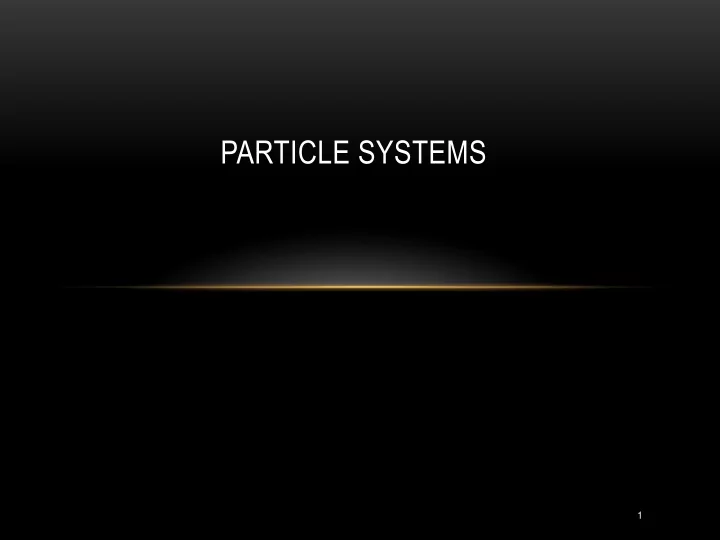

PARTICLE SYSTEMS 1
OUTLINE • Newtonian Particles Meshes • • Efficiency Constraints • 2
INTRODUCTION • Most important of procedural methods Used to model • • Natural phenomena • Clouds • Terrain • Plants • Crowd Scenes • Real physical processes 3
NEWTONIAN PARTICLE • Particle system is a set of particles Each particle is an ideal point mass • • Six degrees of freedom Position • • Velocity Each particle obeys Newtons’ law • f = ma 4
FORCE VECTOR • Independent Particles Gravity • • Wind forces O(n) calulation • • Coupled Particles O(n) Meshes • • Spring-Mass Systems Coupled Particles O(n 2 ) • • Attractive and repulsive forces 5
SOLUTION OF PARTICLE SYSTEMS float time, delta state[6n], force[3n]; state = initial_state(); for(time = t0; time<final_time, time+=delta) { force = force_function(state, time); state = ode(force, state, time, delta); render(state, time) } 6
MESHES • Connect each particle to its closest neighbors O(n) force calculation • • Use spring-mass system 7
SPRING FORCES • Assume each particle has unit mass and is connected to its neighbor(s) by a spring Hooke’s law: force proportional to distance between the points • 8
SPRING DAMPING • A pure spring-mass will oscillate forever Must add a damping term • • Must project velocity · 9
ATTRACTION AND REPULSION • General case requires O(n 2 ) calculation In most problems, the drop off is such that not many particles contribute to the forces on • any given particle Sorting problem: is it O(n log n)? • 10
BOXES • Spatial subdivision technique Divide space into boxes • • Particle can only interact with particles in its box or the neighboring boxes Must update which box a particle belongs to after each time step • 11
LINKED LISTS • Each particle maintains a linked list of its neighbors Update data structure at each time step • • Must amortize cost of building the data structures initially 12
PARTICLE FIELD CALCULATIONS • Consider simple gravity We don’t compute forces due to sun, moon, and other large bodies • • Rather we use the gravitational field Usually we can group particles into equivalent point masses • 13
CONSTRAINTS • Easy in computer graphics to ignore physical reality Surfaces are virtual • • Must detect collisions separately if we want exact solution Can approximate with • repulsive forces 14
COLLISIONS Once we detect a collision, we can calculate new path Use coefficient of resititution Reflect vertical component May have to use partial time step 15
CONTACT FORCES 16
SUMMARY • Newtonian Particles Meshes • • Efficiency Constraints • 17
Recommend
More recommend